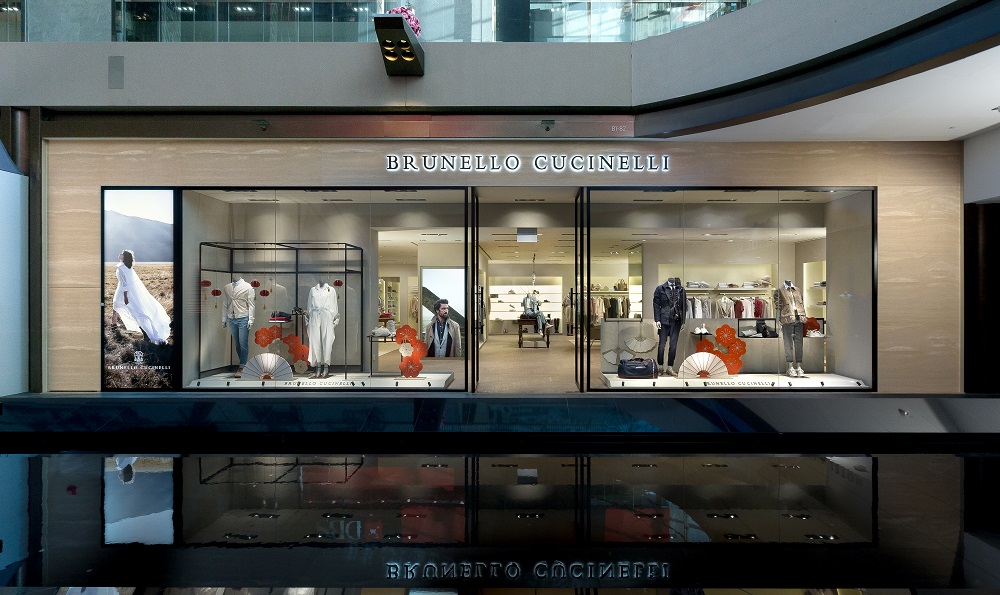
Why it’s vital to gear up for the ‘globotics’ revolution
The forces of globalization and robotics – ‘globotics’ – are opening a new pathway to prosperity for developing nations. Richard Baldwin shares his vision of how this could look....

by Niccolò Pisani, Tahiru Azaaviele Liedong, Paolo Taticchi, Tazeeb Rajwani Published 12 May 2022 in Sustainability • 11 min read
For decades, the general assumption has been that the more a company is able to grow, the better it is. Think of the extraordinary growth trajectories of Coca-Cola and Microsoft. Or look at the expansion of companies like Zara in fashion or Alibaba in e-commerce and you can see how the ability to grow aggressively is crucial for companies to become leaders in their respective industries.
Yet, as is now widely recognized, a portion of society has started to become more concerned about how environmentally sustainable the current status quo is and, related to this, companies’ relentless pursuit of environmentally degrading growth. The UN Sustainable Development Goals (SDGs) are, in part, a global manifestation of this apprehension. This has also led to a huge uprise in sustainable investing, and more specifically ESG-related bonds, with issuance exceeding $1.6 trillion in 2021. The need for companies The need for companies to account for more sustainable approaches in their day-to-day business is putting corporate social responsibility (CSR) increasingly front and center. Stakeholders have called on companies to play active and socially responsible roles to provide public goods and services, strengthen democratic rights, and protect the natural environment.

Despite the growing attention paid to CSR, the temptation to treat sustainability as a strategy “bolt-on” remains an attractive option for some companies, especially because being sustainable is often perceived as getting in the way of ambitious growth plans. When the U.S Environmental Protection Agency found Volkswagen intentionally programmed 11 million diesel engines with software to significantly reduce nitrogen oxide emissions during laboratory emissions testing, the company was aggressively pushing to increase sales of its “clean diesel” cars in the U.S. at the time.
The Volkswagen scandal and several other cases of greenwashing demonstrate that many companies may be tempted to pursue what can be labelled as “fake sustainability”, jumping on the sustainability bandwagon mainly to gain competitive leverage that helps them achieve their growth targets.
That said, there are of course some companies that genuinely want to be sustainable. They care about the environment and aspire to make a positive impact. Yet many of those companies, despite their best intentions, may still struggle to realize the full potential of sustainability, especially when it comes to simultaneously managing their growth and CSR.
This is because the balance required to achieve sustainability and growth can seem difficult to achieve. Sustainability targets may impede plans to build new factories or exploit cheaper supply chains for growth. CSR programs may generate costs that reduce a company’s profitability, thus potentially weakening shareholders’ support for sustainability-related initiatives. Conversely, aggressive growth may undermine sustainability by imposing choices that have negative implications for the environment, or employees’ working conditions, especially in factories located in developing markets.
So, pulled in different directions by conflicting demands from important stakeholders, managers may be tempted to conveniently reconcile the sustainability-growth dilemma by resorting to “CSR-washing”. They may signal sustainability programs to the outside world but don’t do much to implement them. This temptation to treat sustainability as a fad allows organizations to gain external legitimacy and managers to receive shareholders’ support — but only in the short term. In the long term, the consequences of this deception are dire for managers and the companies they lead.
Ultimately, managing the trade-off between growth and sustainability is a matter of how to integrate it into everyday corporate practices and operations, so companies can achieve sustainability and growth in tandem. That’s where “gracious growth” comes in.

Gracious growth (crescita garbata in Italian) is a management philosophy developed by Brunello Cucinelli, founder of an Italian luxury fashion company that carries his name and which was founded in 1978 in Umbria. It enables a company to protect the earth’s ecosystem while realizing long-term realistic profitability, by positioning the company as a “custodian of creation”. It is a philosophy that puts humanity at the heart of business strategy and operations.
This is achieved by setting sustainable and fair objectives for growth and profit. It also means that economic value produced for shareholders is in equilibrium with the value created for people and the planet. Gracious growth relies significantly on empowering employees. Making value chains truly sustainable is prioritised over large, one-off CSR initiatives, thus de-emphasizing distractive, profit-oriented publicity of sustainability efforts, allowing companies to focus on being profitable while also acting as true custodians of the universe.
Brunello Cucinelli’s starting point was that gracious growth required a different approach to capitalism that focuses beyond profits. This led the founder to coin and use the term “humanistic capitalism” – that is, capitalism that combines profit and human dignity. It is conceptually similar to the concept of the “triple bottom line”, under which businesses are encouraged to protect the environment (planet), promote social wellbeing (people), and create a just economy (profit).
This applies to not only company employees but also to a broader array of stakeholders outside the company. At Brunello Cucinelli, they call it “human sustainability” (in Italian “umana sostenibilità”) — that is, sustainability that emphasizes human capital and relationships as the key to companies’ harmonious coexistence with creation. The logic is simple: companies are created by humans for humans. So, if humans are not harmonious among themselves, there can never be harmony between people and other creations on earth. This makes employees, not policy documents or external standards (like ISO 14001) the fulcrum of true sustainability.
Brunello Cucinelli is a fashion company headquartered in Solomeo in Umbria, Italy. It was founded in 1978 by stylist and philanthropist Brunello Cucinelli, who also serves as Executive President and Creative Director. Operating in the personal luxury goods segment, the company designs, manufactures, and distributes men’s and women’s clothing and accessories collections, including knitwear, outerwear, shirts, trousers, skirts, footwear, bags, and small leather goods. Specializing in Cashmere, Brunello Cucinelli is renowned for being an exclusive luxury brand affordable only to the wealthy. Its products are sold through a network of retail and wholesale stores (monobrand and multibrand), which contribute equally to revenue generation. In 2020, about 90% of the distribution network existed outside of Italy. The company has 28 subsidiaries located in Europe, North America, Latin America, and Asia, and a global employee base of about 2000.
Brunello Cucinelli is a highly innovative company. The brand’s distinctive elements are craftsmanship, exclusivity, and contemporaneity, built on the values of “human dignity” and “the beauty of creation.” Leveraging this brand identity, revenues at the company more than tripled between 2010 and 2019 to Є608 million while core profit increased sevenfold in the same period. North America is its largest market, with an average contribution of 35% to the company’s revenues over the past 6 years. Brunello Cucinelli was listed on the Milan Stock Exchange in 2012. Its market capitalization has since appreciated by 361% to reach Є2.4 billion by the end of 2020.
The company’s humanistic approach to business has enabled it to build an ethical brand that is affirmed by a strong ethical corporate culture. For instance, during the Covid-19 pandemic when its competitors were seriously discounting garments with a view to still make profits, Brunello Cucinelli—in the spirit of humanity—gave away Є31.7 million worth of luxury clothes to “people who could hardly afford a Є30 top, let alone a Є3,745 cashmere sweater.” While the global luxury goods market contracted by 22% during the COVID-19 pandemic in 2020, the company only experienced a small decline of 10%, well below the world average.
For his gracious growth philosophy and ideals, Brunello Cucinelli has also received various national and international awards. For instance, he was appointed as “Cavaliere di Gran Croce al Merito della Repubblica Italiana” (Knight Grand Cross of the Order of Merit of the Italian Republic) and “Cavaliere del Lavoro” (Knight of Industry) by the President of Italy. In 2011, he received the “Premio Guido Carli” award from the Council of Ministers in Italy for distinguishing himself as an entrepreneur who “bases his work on fundamental values of respect for people and the environment.”
The company ensures that the supply chain is ethical and sustainable. Emphasis is placed on giving opportunity to small, medium, and family-owned suppliers, provided that they share the company’s ideals and responsible practices. Brunello Cucinelli also offers financial support to its suppliers, most of which are local firms that operate quite close by.
Company operations are rooted in empathetic negotiations, innovation in materials and a focus on quality assurance. In all of this, the company aims to respect the stakeholders that affect or are affected by its activities. Green or sustainable innovation is highly supported and encouraged, with schools and academies created to develop local know-how for the advancement of sustainability.
When it comes to interactions with customers and investors, bonding activities are organized annually to give both sets of stakeholders an intimate understanding of the company’s philosophy and management approach. This ensures that the company and its investors share the same expectations of growth, preventing the emergence of pressure to push managers into sacrificing sustainability to please profit-focused investors.
Emphasis is placed on respectful and hospitable customer relations, with the belief that the profits will follow. Customers who patronize the company explicitly because of its sustainability focus are rewarded with premium treatment. Non-intrusive customer relationship practices are emphasized.
Human resources management is at the centre of these approaches, since gracious growth revolves around humans. Recruitment practices aim to find candidates who are motivated to do humane things across the value chain. Employees are mentored about sustainability and are also encouraged to be innovative about how the company can deepen its sustainability philosophy.
Based on our in-depth research of Brunello Cucinelli’s case, here is a four-step approach that companies can embrace to foster gracious growth.
Leadership is the biggest driver of gracious growth, which requires leaders who have a soul, and to be genuine, credible, and transparent. This is not about superficial subscriptions to ethical principles. Rather, it entails living and epitomizing those principles. Eco-authentic leadership involves staying true to the co-creation of a sustainable future that is kind to both natural ecosystems and socio-economic systems. To achieve gracious growth, employees and other stakeholders must see the philosophy resonating and reflecting through the everyday lives of their leaders, who should lead by example.
Eco-authentic leadership is also about developing the right leaders for tomorrow, with trust and sustainability at the core. Gracious growth is a continuous philosophy that lives as long as the company does. Hence, eco-authentic leaders invest in management transitions to ensure that new leaders are ready and skilled to continue the legacies and heritage of gracious growth. That’s why there are two co-chief executives at Brunello Cucinelli, and co-heads for most senior management positions.
Companies need a long-term focus on gracious growth with an emphasis on the planet to make it work. This is because it may not be financially rewarding in the beginning, largely due to the burden of work required to get it off the ground. In the short term, it will entail sacrifices of faster growth and superior profitability. But until companies look beyond the short-term, they will not see the brighter and more rewarding future that gracious growth bestows. That is why at Brunello Cucinelli, the senior leadership never prepares or gives unrealistic budgets to departments or employees. They do not push beyond what is reasonable. They always privilege what is challenging but attainable over what is aggressive.
Sustainability should start with people. After all, it is people who design and implement sustainability initiatives. At Brunello Cucinelli there is a strong sense of belonging. Offices are mostly open, helping to build healthy relationships. Employees are free to go home and spend an hour and a half having lunch with their families. Managers looking to implement gracious growth should create job titles that elevate employee self-esteem and self-worth. At Brunello Cucinelli, cleaners are called “Reorganizing Officers”.
To ensure equity, salaries are also carefully evaluated, with employees earning about 20 percent above the industry average. Additionally, there are caps on pay: the highest paid should not earn more than nine times the lowest paid. End-of-year financial bonuses are the same for every employee, from the upper to the lower echelons. Such practices are replicable in other companies.
Stakeholder engagement and collaboration are crucial for gracious growth. Customers need to understand the sustainability logics underpinning products and services. Suppliers must appreciate and ensure that logistics are ethically sourced. Investors must be willing to accept moderate returns and a slower growth pace. To make these things happen, companies must engage stakeholders and gain their buy-in.
True sustainability and profitable growth are not mutually exclusive. Nor are they conflicting ideals. Through gracious growth, organizations can achieve growth while relentlessly championing ecosystem harmony. They can do this by reinventing, reorganising, and humanizing the entirety of their business. The trappings of sustainability as a strategy bolt-on are attractive, yet destructive. Positive enlightened examples, such as Brunello Cucinelli, do not only show how true sustainability and profitable growth can be achieved. They also represent beacons of hope in a time when temptations to reduce sustainability to a legitimizing fad remain worryingly strong.
This article is based on Gracious growth: How to manage the trade-off between corporate greening and corporate growth, by Tahiru Azaaviele Liedong, Paolo Taticchi, Tazeeb Rajwani, and Niccolò Pisani. The research was first published in Organizational Dynamics.

IMD Professor of Strategy and International Business
Niccolò Pisani is Professor of Strategy and International Business at IMD. His award-winning research has appeared in the world’s leading academic journals and extensively covered in the media. His work has been featured in both Harvard Business Review and MIT Sloan Management Review. He has also written several popular case studies that are distributed on a global scale. He also co-directs the International Growth Strategies program.

Associate Professor of Strategy and International Business at University of Bath School of Management
Tahiru Azaaviele Liedong is Associate Professor of Strategy and International Business at University of Bath School of Management, with research interests in non-market strategy, corporate governance, institutional entrepreneurship, and international business.

Professor in Strategy and Sustainability and the School Deputy Director at UCL School of Management
Paolo Taticchi is a Professor in Strategy and Sustainability and the School Deputy Director at UCL School of Management. He teaches modules on sustainability and competitive advantage, strategy, consulting, and the future of cities.

Professor of International Business and Strategy / Head of Department of Strategy and International Business at Surrey Business School
Tazeeb Rajwani is a Chaired Professor in International Business and Strategy and Head of the Department of Strategy and International Business at Surrey Business School. He is also Visiting Professor at Cranfield School of Management and Fellow at University of Edinburgh.

24 October 2023 • by Richard Baldwin in Competitiveness
The forces of globalization and robotics – ‘globotics’ – are opening a new pathway to prosperity for developing nations. Richard Baldwin shares his vision of how this could look....

20 October 2023 • by David Bach in Competitiveness
Amid a complex situation rife with uncertainties, businesses should be prioritizing political risk alongside economic opportunities....

6 October 2023 • by Howard H. Yu in Competitiveness
Unpredictability in the marketplace can quickly burst the bubble of any company not agile enough to adapt to change.Here are lessons from the soda pop giant’s successful mission to update and diversify...

20 September 2023 • by Arturo Bris, Misiek Piskorski in Competitiveness
South Korea’s global champions and its broader economic landscape offer invaluable lessons for leaders worldwide. ...
Explore first person business intelligence from top minds curated for a global executive audience